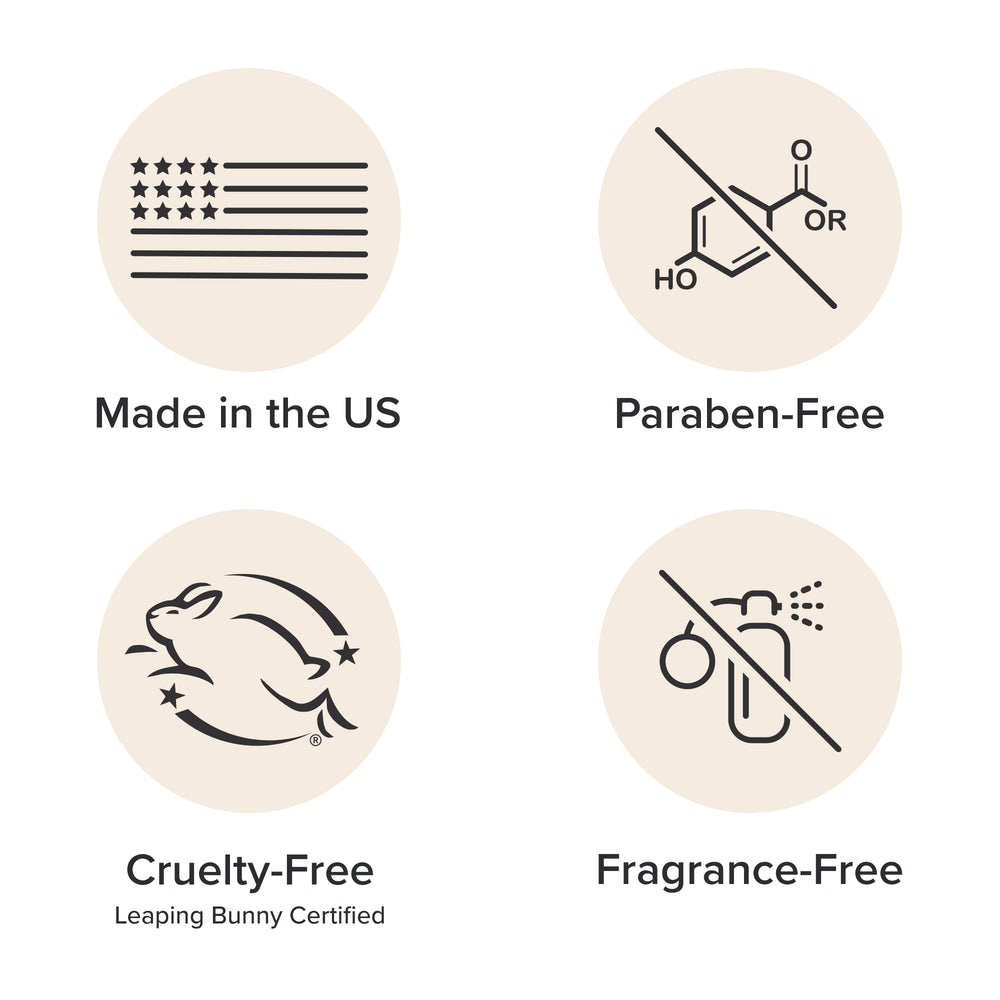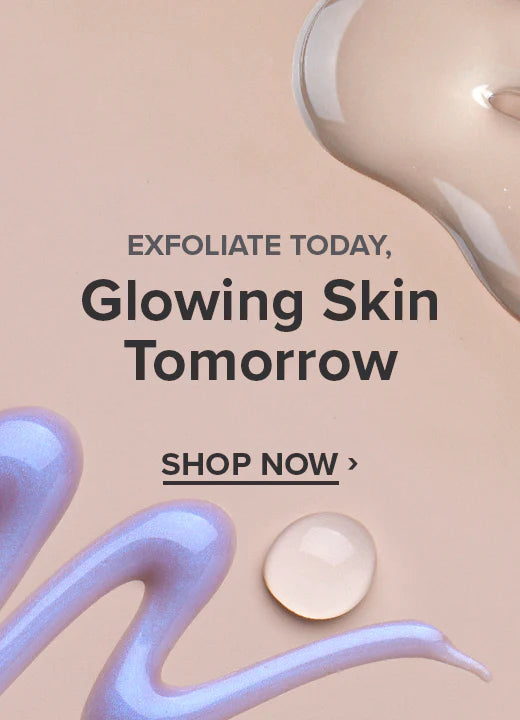Written by:Bryan Barron
Medically Reviewed by:Joyce Park MD Board-Certified Dermatologist
In this article:
What is hyaluronic acid?
Why is hyaluronic acid important?
How does hyaluronic acid work?
What are the benefits of hyaluronic acid?
Sodium hyaluronate vs. hyaluronic acid
Who should use hyaluronic acid
How to use hyaluronic acid in your skin care routine
What not to mix with hyaluronic acid
What are the side effects of hyaluronic acid?
Hyaluronic acid skin care products
Hyaluronic acid supplements
In the world of skin care, trendy ingredients come and go, but research shows that hyaluronic acid is not just a trend. In fact, it’s one of the best skin care ingredients you can use to replenish and hydrate.
Below, we’re jumping into how it works its hydrating magic, if hyaluronic acid is suitable for your skin type and how to incorporate it into your skin care routine.
What is hyaluronic acid?
Hyaluronic acid is a naturally occurring substance in skin. Specifically, it’s a glycosaminoglycan, a fancy name for a vital naturally occurring substance that’s part of skin’s youth-supporting matrix. As the chief glycosaminoglycan in skin, hyaluronic acid works to keep every aspect of skin stable, hydrated, and renewed (1).
Why is hyaluronic acid important?
Hyaluronic acid is considered so integral because of its stunning capacity to attract and hold onto 1,000x its weight in moisture. It’s a humectant, a category of skin care ingredients that are hygroscopic, meaning they draw and can trap moisture from their surroundings. Humectants are often found in water-based moisturizers, serums and other leave-on skin care products because of their ability to help boost hydration for all skin types. They’re especially beneficial for dry, dehydrated skin.
Hyaluronic acid is also a postbiotic, which is an ingredient that naturally occurs as probiotics found in skin's microbiome break down. Researchers believe that this synergy with skin is another reason application of hyaluronic acid leads to healthier, younger-looking skin (2). It strengthens and helps rebuild the unique microbiome on your skin.
How does hyaluronic acid work?
So, what does hyaluronic acid do for your skin? The science-based magic lies in hyaluronic acid’s ability to replenish incredible amounts of moisture. One gram (or 0.03 oz.) of hyaluronic acid can hold up to six LITERS of water. Talk about mind-blowing! What’s even more impressive is that hyaluronic acid can do this for skin without tipping the scales and giving skin too much water (which, surprisingly, can be a problem because it breaks down key substances that normally hold skin’s surface intact).
What are the benefits of hyaluronic acid?
Hyaluronic acid benefits skin in a plethora of ways. This ingredient powerfully enhances moisture content, leaving skin radiantly hydrated, and expertly revitalizes skin’s outer surface layers, so they look and feel softer and smoother. This “plumping” effect instantly improves the appearance of fine lines and wrinkles.
Hyaluronic acid’s moisture-binding characteristic is exceptionally important when it comes to skin aging (3). Here’s why: When we’re young, our skin can retain a balanced amount of water, but it loses this ability as we age, which in turn affects moisture-binding substances in skin such as sodium PCA and amino acids. This deficiency results in a visible loss of firmness, pliability and a diminished appearance of plumpness and suppleness (hello, wrinkles).
Unprotected sun exposure and environmental assault weakens skin’s surface and causes premature aging. Hopefully, you already know that daily use of face broad-spectrum sunscreen and avoiding harsh skin care ingredients is a must for combating these things, but you might not know that hyaluronic acid’s antioxidant and skin-replenishing properties go a long way toward mitigating those issues, too (4). It’s especially effective when used as part of a complete anti-aging skin care routine that includes other research-backed ingredients. Now that’s what we call a multitasking anti-aging ingredient!
Overall, using hyaluronic acid for skin offers a multitude of benefits.

Sodium hyaluronate vs hyaluronic acid
In addition to hyaluronic acid, you may have seen the similarly named sodium hyaluronate on a skin care product’s ingredient list. Not surprisingly, these two ingredients are related. Sodium hyaluronate is a skin-beneficial salt that’s derived from hyaluronic acid. Sodium hyaluronate is helpful in the same way that hyaluronic acid for skin is but with one extra advantage— because of its lower molecular weight, it is more bioavailable, meaning skin absorbs it more easily than it does hyaluronic acid.
Does that mean that sodium hyaluronate is better than hyaluronic acid? No. In fact, it’s great if products such as hyaluronic acid moisturizers and creams contain both hyaluronic acid and sodium hyaluronate, so your skin can reap benefits on multiple levels.
Note: Some companies use what’s called “low molecular weight" hyaluronic acid,
which has a smaller molecule size than regular hyaluronic acid (5). Molecules of “regular” hyaluronic acid are larger, which explains why they remain on skin’s surface. Making hyaluronic acid smaller means it can reach a bit farther into skin’s uppermost layers for visibly enhanced results. There are many types of hyaluronic acid; these two are just the stars of the pack! To date, substantiated research hasn’t proven there’s a best type of hyaluronic acid to use in skin care products.
Who should use hyaluronic acid?
Hyaluronic acid is incredibly gentle and phenomenally helpful for all skin types; everyone can reap the benefits of hyaluronic acid for skin! Since it’s naturally present in the body, it’s suitable for everyone, even for those prone to eczema, rosacea and acne.
Those with dry or sensitive skin will experience the most improvement after incorporating hyaluronic acid into their routine, as the ingredient works to hydrate and boost skin’s barrier health.
How to use hyaluronic acid in your skin care routine (when and where to use it)
Hyaluronic acid isn’t a finnicky ingredient. Adding this humectant to your skin care routine is as easy as finding your favorite product and slotting it into your existing regimen.
You can use topical hyaluronic acid products twice a day, morning and night. Apply your hyaluronic acid product format of choice (toner, serum, treatment, moisturizer) after cleansing, remembering to follow the thinnest to thickest texture guideline.
What not to mix with hyaluronic acid?
Hyaluronic acid is a welcome addition to most skin care routines. For one, our skin already loves, and responds positively, to the hydrating ingredient. On top of this, hyaluronic acid is gentle, meaning that usage alongside juggernauts like retinol and beta hydroxy acid (BHA, or salicylic acid) isn’t just tolerated, but encouraged.
If you’re looking for optimal hydration and barrier support, mix emollient and occlusive ingredients with humectants like hyaluronic acid.
What are the side effects of hyaluronic acid?
Hyaluronic acid is considered non-irritating as a topical skin care product, with no major side effects reported (6). In fact, its ability to help regulate skin’s microbiome helps visibly reduce redness and sensitivity. Its natural calming benefit means it is also suitable for breakout-prone skin. Hyaluronic acid (all forms) is not known to clog pores or worsen acne.
There have been reports of adverse reactions in some cases when it comes to dermal fillers using hyaluronic acid, which included swelling and infection, though those cases are considered rare– and are unrelated to the topical use of skin care products containing hyaluronic acid or its derivatives (7).
Hyaluronic acid skin care products
Now that you know how hyaluronic acid and sodium hyaluronate can benefit skin, you might be wondering how we’ve chosen to incorporate these research-backed ingredients into our products. Paula’s Choice Skincare often includes both forms of these hero humectants in moisturizer, serum, toner and face mask formulations, so you have a variety of ways to add hyaluronic acid to your skin care routine.
Each of the following Paula's Choice hyaluronic acid skin care product formulas is fragrance-free and contains redness-reducing, hydrating and antioxidant ingredients that make skin smooth and soft. They’re also gentle enough even for those with eczema-prone and rosacea-prone skin.
With a silky, lightweight texture that’s perfect for all skin types, our Hyaluronic Acid Booster is indispensable for its hydrating, line-smoothing formula supported by ceramides to reinforce skin’s natural barrier. Apply directly to skin after cleansing, toning, and exfoliating, or mix into your favorite serum or moisturizer.
Those with dry to very dry skin will find our RESIST Intensive Repair Cream’s rich, retinol-spiked formula is ideal for a daily (and/or nightly) dose of wrinkle-softening hydration supported by sodium hyaluronate, ceramides, and peptides.
If achieving radiant, glowing skin overnight is one of your skin care goals, you’ll appreciate our RADIANCE Renewal Mask’s lush gel texture and innovative formula. This overnight renewing mask features skin-plumping sodium hyaluronate plus brightening antioxidants, niacinamide and vitamin C, as well as extensively researched hydrating ingredients.
If you struggle with acne and are on the hunt for the best moisturizer for acne-prone skin, look no further than our CLEAR Oil-Free Moisturizer. Its sheer lotion texture features sodium hyaluronate, ceramides and blueberry extract to provide hydration and soothe redness that often accompanies breakouts.
Our RESIST Barrier Repair Advanced Moisturizer is a great pick for those looking to nourish skin’s barrier and fight signs of premature aging. This light lotion taps into the power of sodium hyaluronate, ceramides, peptides, and watermelon seed oil.
Our C5 Super Boost Eye Cream is a great way to bring radiance back to the undereye area. Simply apply this multifaceted light, lotion formula, packed with peptides, hyaluronic acid and vitamin C to brighten and hydrate a dry, dull under eye area during your morning or nighttime routine.
Don't forget your lips! Our Hyaluronic Acid + Peptide Lip Booster visibly enhances lip fullness thanks to its blend of hyaluronic acid filling spheres that keep their natural moisture from escaping. In doing so, water that would normally evaporate remains within lips instead, helping to maintain a smooth, youthful, line-free appearance.
Hyaluronic acid supplements
What about hyaluronic acid supplements for skin? Does oral intake deliver visible results? A growing body of research says yes. It turns out oral intake of hyaluronic acid can make it to the skin, where it helps the lower layers influence what happens and becomes visible on skin’s surface. Amounts of 120-150 milligrams per day have been shown to increase skin’s hydration, aid in the transport of nutrients in skin, visibly improve elasticity, and complement the plumping, wrinkle-smoothing results topical hyaluronic acid provides (8).
Interesting fact: As we age, our skin’s natural content of hyaluronic acid drops dramatically. People between the ages of 19 and 47 have twice as much hyaluronic acid in their skin as those in their 50s and 60s. As we age into our 70s, that amount drops even further, making hyaluronic acid supplements even more important, as they help replace what skin loses with the passage of time (and of course, cumulative sun damage hastens this and other skin-aging processes).
Learn more about skin care ingredients.
References for this information:
- International Journal of Biological Macromolecules, December 2018, pages 1,682-1,695
- BMC Microbiology, November 2013, ePublication
- Clinical, Cosmetic, and Investigational Dermatology, August 2017, pages 311-315
- Dermato-endocrinology, July 2012, pages 253–258
- Journal of Drugs in Dermatology, September 2011, pages 990–1000
- International Journal of Toxicology, July–August 2009, pages 5–67
- Advances in Oral and Maxillofacial Surgery, April – June 2021, ePublication
- Clinical, Cosmetic, and Investigational Dermatology, July 2017, pages 267-273
Recommended Products








